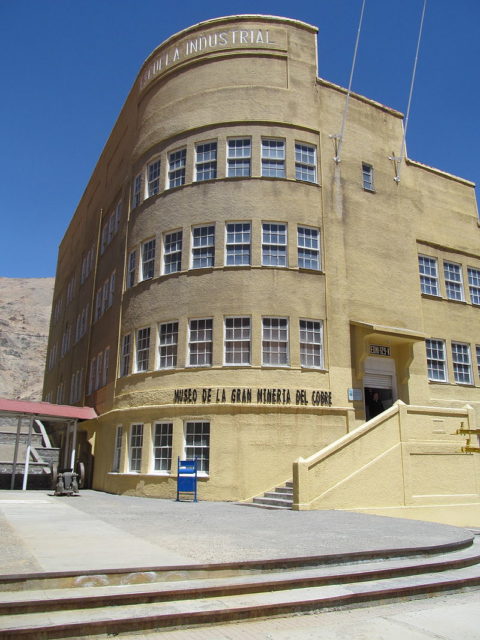Appointed a World Heritage Site by UNESCO in 2006, the Sewell Mining Town is one of Chile’s most important sites of interest.
During the 1930s and 1940s, the town of Sewell was booming and today is completely uninhabited.

Located on the slopes of the Andes, at an altitude of almost 7,381 feet (2,250 meters) in the Machali commune, Sewell was Chile’s most productive mining town. Founded in 1904 by the Braden Copper Company and named after its president, Barton Sewell, the town was built at the site of the world’s largest underground copper mine, El Teniente.


At the beginning, the town was nothing more than a small camp, housing only workers to extract copper from the mine. However, in the span of 10 years, Sewell succeded transforming itself into a full-fledged town.
By 1915, the town had its own hospital, fire department and a social club. The building and houses were made of timber and painted with bright colors. A railroad was constructed, connecting the mine to Rancagua that increased the town’s economy even further. And this was just in time because the need for copper doubled in the midst of World War I. More workers moved into Sewell, and by 1918, the town was housing slightly over 12,000 people.



In the years to follow, Sewell kept getting bigger and bigger, exponentially growing in infrastructure and architecture. The number of multi-colored buildings went up. Technical schools, theater, bowling alley, a church and a heated pool were also built, which made Sewell to take on the characteristics of a city.


The town became the largest producer of copper in the world, and as being the first company-owned town in Chile, Sewell established this kind of phenomenon, influencing other companies to do the same and start building towns in remote parts of the world where natural resources were in abundance.


At its peak, Sewell counted almost 16,000 inhabitants. And even two devastating tragedies that happened to the town wasn’t the crucial factor for its abandonment. On 8 Aug. 1944, a huge avalanche broke the slopes above the town and 102 people lost their lives. And then, a year later, June 1945, a fire in the mine killed 355 workers through smoke inhalation, which led to the development of more safety regulations.


However, the critical point happened at the end of the 1960s. The copper industry got nationalized and became a property of the state. The Allende Government now owned a 51% stake in the company via the state-owned CODELCO (Corporación Nacional del Cobre de Chile) and most of the people were moved out to Rancagua. In 1977, after over seven decades of active life, the town was ultimately abandoned as a mining settlement and the demolition of buildings began remaining only in partial use for the contractor’s personnel.


Luckily, this ludicrous idea was halted at the end of the 1980s, and in 1998 the Government of Chile declared Sewell a National Monument. They clearly learned their mistake, and many buildings and houses were remodeled.

Now, the town, while still uninhabited, it is in a tremendous preserved state with a history museum and 50 restored buildings. It is known as the “City of Staircases”, and by many, it’s considered a wonder of architectural design. The city is only allowed to be visited by tour operators and guides. And the only way to get there is through one of three tour companies. The mine is still in business, and it produces 3% of the worlds’ copper.
